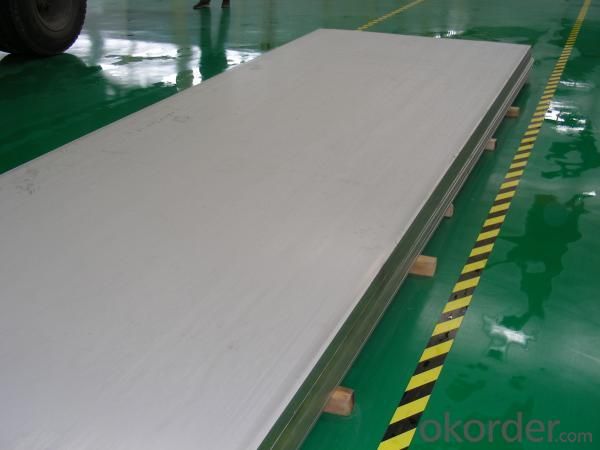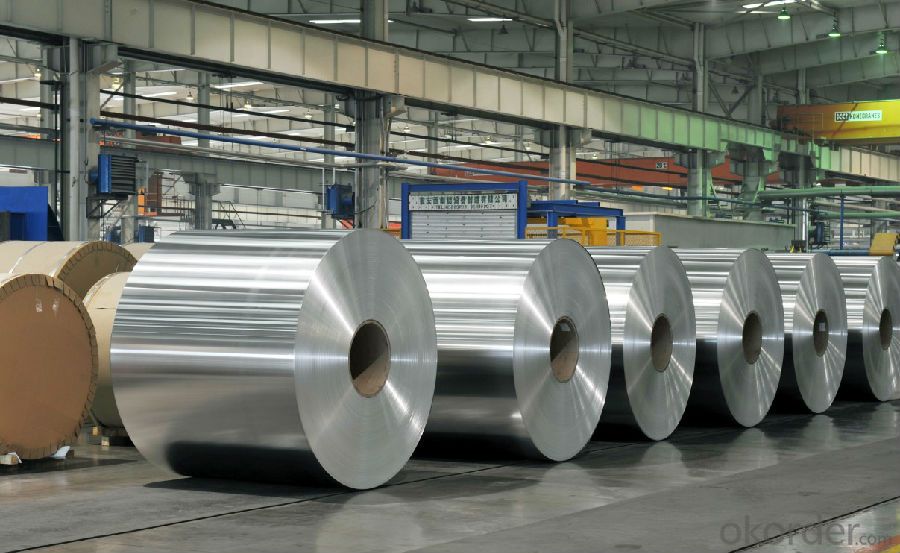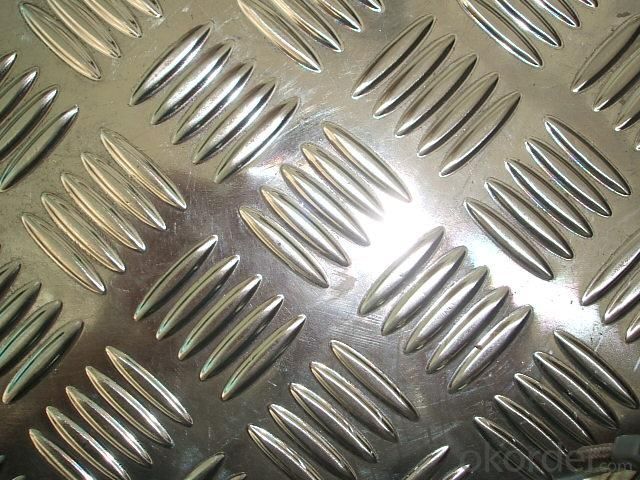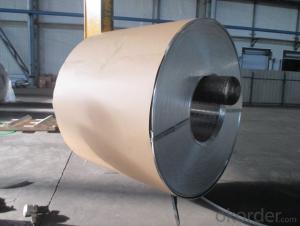Steel Rolled Coil SS400 Q195 Hot Rolled Steel Coil
- Loading Port:
- China main port
- Payment Terms:
- TT OR LC
- Min Order Qty:
- 20 m.t.
- Supply Capability:
- 1000 m.t./month
OKorder Service Pledge
OKorder Financial Service
You Might Also Like
Item specifice
Product Description:
Structure of Steel Rolled Coil SS400 Q195 Hot Rolled Steel Coil Description:
We have more than 10 years experiences on manufacturing kinds of aluminum profiles, such as Aluminum Window & Door profiles, Aluminum tile trim profiles, Aluminum profiles for LED light, Round/Square General profiles, Aluminum heat sink, Aluminum heating insulation profiles, Curtain wall Aluminum profiles, and others Industry profiles.
Our products have exported to all over the world, and we also have a large of market share in Algeria, Angola, Philippine, Guinea, Ghana, South Africa, Nepal, Nigeria, Tanzania, Iraq etc.
Main Features of the Steel Rolled Coil SS400 Q195 Hot Rolled Steel Coil:
1, Strong R&G: help customers finalize the design, strong tool design ability, excellent, pressing and surface treatment technology;
2, Strong quality management: ISO&SGS SYSTEM;
3, 24 hours on-line communication, professional, patient, flexible;
4, High capacity of manufacturing and wide range of products;
5, We can provide secondary manufacturing.
6, High corrosion resistance, high weather resistance and good wear resistance.
7, Alternative surface treatment: Colorful ANODIZE, POWDER COATING, ELECTROPHORESIS & WOODEN GRAIN. Plentiful colors upon your needs.
8, Excellent material for smooth and subtle edges, elegant appearance.
9, Strong coated adhesion which is suitable for construction and industrial material.
General Information of Cold Rolled Steel Sheet
The raw material of cold rolled steel sheet is high quality hot rolled product, and after pickling, continuous rolling, degreasing, annealing, skin pass, slitting and cut to length line etc. Along with it many kinds of new technology and new process of global cold rolling production have been applied. Therefore the quality of the goods could be guaranteed. The finished product has a variety of excellent capabilities, such as processing capability and smooth, flat surface. It’s widely used in outdoor and interior decoration, furnishing manufacturing, home appliance, automobile etc.
Specifications of Cold Rolled Steel Sheet
1) Grade: SPCC, SPCD, SPCE, DC01-06, St12, Super deep drawing
2) Standard: JIS G3141-1996, EN 10131-2006, DIN EN 1002
3) Thickness: 0.20mm - 3.0mm
4) Width: 600/1000/1250/1500 (mm) or per customer's request
Package of Cold Rolled Steel Sheet
Strapped with min three strapping strips, covered by anti-water paper and plastic film, fixed on the iron or wooden pallets by strapping strips and covered by plastic bag to prevent damage from transportation.
Applications of Cold Rolled Steel Sheet
1) For the further producing of hot dip galvanized steel products
2) Cold rolled Steel: Auto manufacture, Oil drum, Transformer's tank panel, Furniture etc.





- Q:What are the weight and density of aluminum sheets?
- The weight and density of aluminum sheets depend on their thickness and dimensions. However, generally speaking, the density of aluminum is approximately 2.7 grams per cubic centimeter (g/cm³) or 2700 kilograms per cubic meter (kg/m³). As for the weight, it can be calculated by multiplying the density by the volume of the aluminum sheet. For example, if you have a sheet of aluminum that is 1 meter by 1 meter and 1 millimeter thick, the volume would be 0.001 cubic meters (1 meter x 1 meter x 0.001 meter). Multiplying this volume by the density of aluminum, you would find that the weight of the sheet is 2.7 kilograms (0.001 cubic meters x 2700 kg/m³). Remember that these values can vary depending on the exact dimensions and thickness of the aluminum sheet in question.
- Q:How do I prevent corrosion on aluminum sheets?
- To prevent corrosion on aluminum sheets, several steps can be taken: 1. Regularly clean the aluminum sheets using a mild detergent or aluminum cleaner to eliminate any dirt, grime, or chemical residues present on the surface. This will prevent the accumulation of corrosive substances. 2. It is worth considering the application of a protective coating on the aluminum sheets. There are different types of coatings available, such as clear coats, anodizing, or painting. These coatings act as a barrier between the aluminum and the surrounding environment, effectively preventing corrosion. 3. Take care to avoid contact with corrosive substances. Aluminum can be susceptible to corrosion when exposed to certain chemicals like acids, alkalis, or saltwater. Be mindful of the environment in which the aluminum sheets are stored or utilized and steer clear of exposure to these corrosive substances. 4. Store the aluminum sheets in a dry environment with low humidity levels. Moisture can accelerate the corrosion process, so it is crucial to keep the sheets dry and protected from excessive moisture. 5. Consider implementing preventive measures such as using corrosion inhibitors or anti-corrosion sprays specifically designed for aluminum. These products can provide an additional layer of protection against corrosion, particularly in harsh or corrosive environments. By adhering to these preventive measures, the risk of corrosion on aluminum sheets can be significantly reduced, effectively extending their lifespan.
- Q:How does the surface treatment affect the corrosion resistance of aluminum sheet?
- Enhancing the corrosion resistance of aluminum sheet is greatly influenced by its surface treatment. Aluminum itself possesses inherent corrosion resistance due to the formation of a thin oxide layer on its surface. However, this oxide layer may not always be sufficient in safeguarding the metal against aggressive environments or harsh conditions. To significantly improve the corrosion resistance of aluminum sheet, various surface treatments such as anodizing, chromating, or painting can be employed. Anodizing involves the creation of a controlled oxide layer on the aluminum's surface through an electrochemical process. This layer exhibits high resistance to corrosion and effectively protects the metal from various corrosive agents. On the other hand, chromating involves the application of a chromate conversion coating that forms a thin film on the aluminum surface. This coating acts as a barrier, preventing the penetration of corrosive substances and subsequent oxidation. Additionally, it enhances the adhesion of subsequent paint or adhesive layers. Painting is another commonly utilized surface treatment for aluminum sheets. By applying a paint layer, the metal is not only shielded from corrosion but also acquires an aesthetically pleasing finish. The paint functions as a physical barrier that safeguards the aluminum against moisture, chemicals, and other corrosive elements. The selection of the appropriate surface treatment depends on the specific application and the desired level of corrosion resistance. Anodizing is often preferred in construction, automotive, and aerospace industries as it provides exceptional corrosion protection and enhances the appearance of the metal. Chromating is commonly utilized in electrical and electronic applications, as it offers both corrosion resistance and electrical conductivity. Painting is suitable for applications where both aesthetics and corrosion protection are of equal importance, such as architectural elements or consumer products. In conclusion, the corrosion resistance of aluminum sheet is significantly influenced by its surface treatment. Anodizing, chromating, and painting all contribute to enhancing the protective properties of aluminum against corrosion, thereby extending its lifespan and ensuring its durability in various environments.
- Q:Are 101 aluminum sheets suitable for cryogenic applications?
- No, 101 aluminum sheets are not suitable for cryogenic applications. While aluminum is generally a good choice for low-temperature environments due to its low thermal conductivity and high strength-to-weight ratio, 101 aluminum is not specifically designed to withstand the extreme temperatures associated with cryogenic applications. For cryogenic applications, materials such as aluminum alloys (e.g., 5083 or 6061) or specialized cryogenic alloys like stainless steel or titanium are typically used, as they possess enhanced properties to handle the extreme cold temperatures without compromising their structural integrity. Therefore, it is recommended to use materials specifically designed for cryogenic applications to ensure optimal performance and safety.
- Q:I have a lot of old aluminum cake pans, coffee pots, pots and pans and various old nuts and bolts made of aluminum. Would it be worth it to scrap them? They really aren't usable for cooking anymore. They are clean.
- yes the price is up right now.
- Q:Are 101 aluminum sheets suitable for radiator manufacturing?
- Indeed, 101 aluminum sheets prove to be fitting for the production of radiators. This particular aluminum alloy, known as 101 aluminum, boasts a pure composition that lends itself to exceptional thermal conductivity, making it a prime choice for radiator utilization. Moreover, its remarkable resistance to corrosion proves pivotal in radiator applications that frequently entail contact with water and other fluids. Furthermore, the lightweight nature and ease of manipulation of 101 aluminum sheets facilitate efficient processes for radiator manufacturing. In summary, the desired properties and characteristics essential for the creation of radiators are duly satisfied by 101 aluminum sheets.
- Q:Are the aluminum sheets suitable for decorative purposes?
- Indeed, decorative purposes can be served by aluminum sheets. Aluminum, a material known for its versatility, can be effortlessly molded, trimmed, and maneuvered to produce a myriad of decorative components. Its lightweight nature, durability, and resistance to corrosion contribute to its widespread adoption for both indoor and outdoor uses. The availability of aluminum sheets in a vast array of finishes, colors, and patterns further amplifies the scope for limitless design options. Whether it is for embellishing architectural accents, crafting signage, manufacturing furniture, or producing artwork, aluminum sheets possess the potential to elevate the visual allure of any given area.
- Q:Can aluminum sheets be used for protective enclosures?
- Yes, aluminum sheets can be used for protective enclosures. Aluminum is a lightweight yet durable material that offers excellent protection against various environmental factors such as corrosion, moisture, and UV rays. It is commonly used in industries such as automotive, aerospace, and construction for manufacturing enclosures to shield sensitive components or equipment from potential damage.
- Q:The difference between aluminum plate and aluminum plate
- Aluminum row is aluminum profile! Cheapness! The manufacturing process is different. The performance of aluminum plate will be higher! I hope you can adopt it! Is there anything you'd like to inquire about?!The data from Suzhou Juteng Metal Technology Department
- Q:What are the different finishes available for aluminum sheets?
- Aluminum sheets offer a variety of finishes, each possessing unique characteristics and advantages. Some commonly used finishes include: 1. Mill finish: This is the most basic finish, giving aluminum sheets a smooth and shiny surface. It is achieved through the rolling mill process, maintaining the natural appearance. Mill finish is commonly preferred in industrial applications where aesthetics are not a primary concern. 2. Anodized finish: Anodizing involves an electrochemical process that adds an oxide layer to the aluminum sheet, enhancing durability and corrosion resistance. Anodized finishes can range from clear to various colors, and can be dyed to achieve specific shades. 3. Brushed finish: By brushing the aluminum sheet with abrasive materials, a pattern of fine lines is created on the surface, resulting in a distinctive textured appearance. Brushed finishes are often used in architectural and decorative applications. 4. Polished finish: Polishing aluminum sheets involves buffing the surface to a high shine, producing a mirror-like, reflective finish. This finish is commonly chosen for decorative purposes, such as in interior design, automotive detailing, or jewelry making. 5. Embossed finish: Embossing creates raised patterns or designs on the aluminum sheet, adding texture and visual interest. It can be achieved through roll embossing or stamping methods and is commonly used for decorative purposes or to enhance grip in certain applications. 6. Powder-coated finish: Powder coating involves applying a dry powder to the aluminum sheet and then curing it under heat, resulting in a tough, durable, and visually appealing finish. Powder-coated finishes are available in a wide range of colors and offer excellent resistance to fading, chipping, and scratching. These are just a few examples of the diverse finishes available for aluminum sheets. The choice of finish will depend on the specific requirements of the application, including aesthetics, durability, and functionality.
1. Manufacturer Overview |
|
|---|---|
| Location | |
| Year Established | |
| Annual Output Value | |
| Main Markets | |
| Company Certifications | |
2. Manufacturer Certificates |
|
|---|---|
| a) Certification Name | |
| Range | |
| Reference | |
| Validity Period | |
3. Manufacturer Capability |
|
|---|---|
| a)Trade Capacity | |
| Nearest Port | |
| Export Percentage | |
| No.of Employees in Trade Department | |
| Language Spoken: | |
| b)Factory Information | |
| Factory Size: | |
| No. of Production Lines | |
| Contract Manufacturing | |
| Product Price Range | |
Send your message to us
Steel Rolled Coil SS400 Q195 Hot Rolled Steel Coil
- Loading Port:
- China main port
- Payment Terms:
- TT OR LC
- Min Order Qty:
- 20 m.t.
- Supply Capability:
- 1000 m.t./month
OKorder Service Pledge
OKorder Financial Service
Similar products
New products
Hot products
Hot Searches
Related keywords































